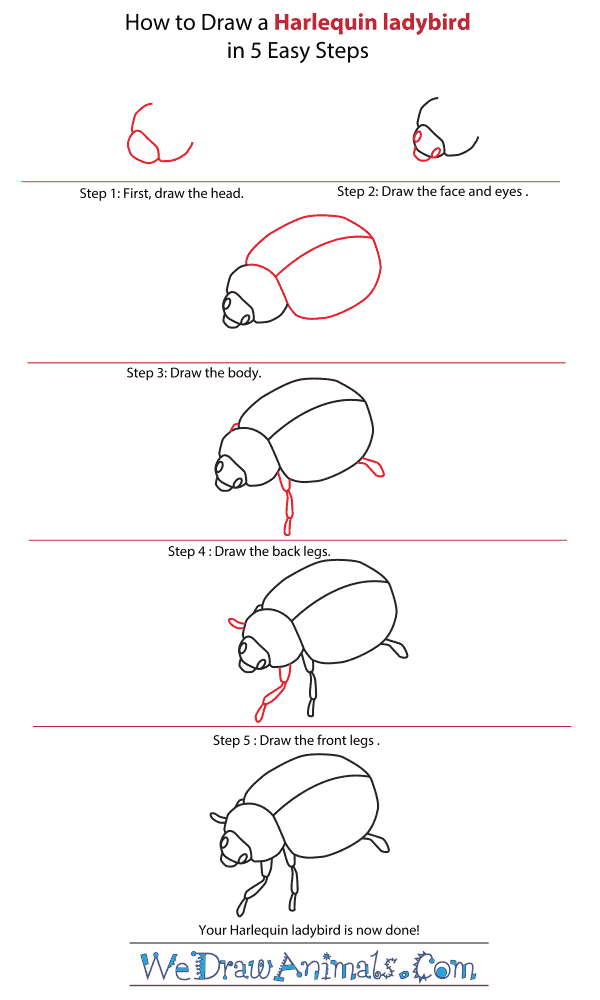In this quick tutorial you'll learn how to draw a Harlequin Ladybird in 5 easy steps - great for kids and novice artists.
The images above represent how your finished drawing is going to look and the steps involved.
Below are the individual steps - you can click on each one for a High Resolution printable PDF version.
At the bottom you can read some interesting facts about the Harlequin Ladybird.
Make sure you also check out any of the hundreds of drawing tutorials grouped by category.
How to Draw a Harlequin Ladybird - Step-by-Step Tutorial
Step 1: To draw the head, draw two separate sections. Draw a small, oval for the first section, and then two curved lines for the body
Step 2: Add two circles for the eyes, and then a line bewteen the eyes for the mouth.
Step 3: Draw the rest of the body. Make another secion, a large circle, split down the middle.
Step 4: Draw the back legs by making small little sections that join together and go down.
Step 5: Draw the front legs, which are the same as the back legs.
Interesting Facts about the Harlequin Ladybird
Harlequin ladybird is a beautiful beetle that is red, orange with black spots or black with red spots. It is commonly and naturally found in Eastern Asia. They are 5.5-8.5mm long. Their population is controlled manually, by capturing them or by using insecticides.
Did you know?
- Harlequin ladybird may have zero to 22 patches on them.
- In the month of October, they enter homes to prepare for winters, which is why they are also called ‘Halloween lady beetle’.
- In order to control populations of scale insects and aphids, harlequin ladybirds are imported to North America and Europe.
- A number of stocks of wines have spoiled due to the contamination of grapes by harlequin beetles.
- They can bite humans and release liquids that have bad smell and leave a stain when they are threatened or attacked by their predators.
- It has the ability to even feed on other ladybirds.
- Harlequin ladybirds are resistant to diseases that other ladybirds are sensitive to.
- These ladybirds talk to each other by releasing specific pheromones.
Lesson plan note: Ladybirds are very easy to find in parks. Take children out to a park one day and let them see a ladybird and adore its beauty!






